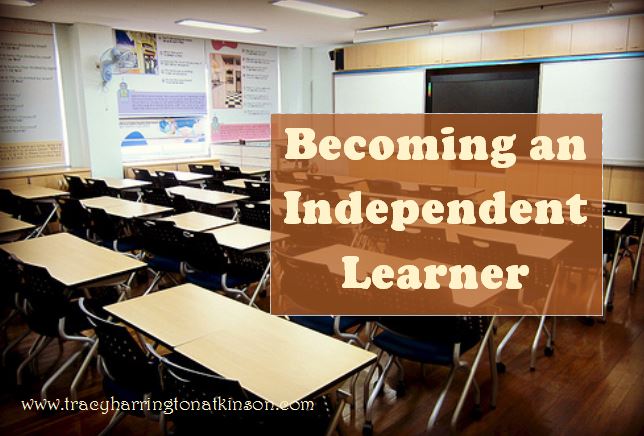When I ask students about the purpose of higher education and attending college, I get the same answer repeatedly. To get a good job or to start a career. This is only a small piece of the pie
That’s not the purpose of higher education! The purpose of higher education is to transition an individual from a dependent learner to an independent learner and to help them to recognize their learning potential (Fry, Ketteridge & Marshall, 2014).
A dependent learner is someone who has to be told what and how to study. The teacher is mainly responsible for their educational process. This can be seen in our K-12 school systems. The student attends class where the teacher tells the student everything he/she needs to know and then gives them the materials to learn. 
An independent learner is the student who is self-motivated to learn on their own. They will be responsible for learning the content and will search out sources in which to learn. My favorite example of this is a freshman with whom I counseled. Following each lecture, he would schedule some time to search the internet for additional sources which would give him more information or even another perspective on what was taught in class.
The greatest question is how do we nudge our students from being a dependent learner to being an independent learner? It doesn’t have to be complicated. Small questions will make the difference.
Several weeks ago, my youngest daughter, now in junior high school, asked about the possibility to take a course at school during the fall semester. My first thought was to pick up my cellphone and make a call, but I paused. I’ve learned that pausing often is vital in teaching situations. Leaving my phone on the table, I asked, “That sounds like a great idea. What could you do to make that happen?” She cocked her head to the side momentarily before excitedly answering, “I bet my counselor, Mrs. __, would be able to help me figure this out.”
I encouraged, “That sounds like a great resource. What exactly would you ask her?”
“I would say, ‘Mrs. ____, I would like to take the honors English class. What do I need to do to get into this class for the fall semester?”
“That sounds wonderful.” I have to admit I was so proud of her. “How will you get in touch with her?”
“I could call her. I could also send her an email.”
“Fantastic. Where will you find her contact information?”
“On the school website?” She half-stated and half-questioned.
She sent the email and got all of the information. She needed to get to the school to visit with Mrs. ___ personally. I stepped in at this point and brought her to school. I met with her and the counselor and then waited for her while she met individually. She proudly walked out with a new sense of ownership because she had figured things out for herself.
The hardest part of being a parent or educator is wanting to solve the problems for our children. I am a die hard fixer. I want everything to be perfect for my children and there isn’t anything I would do for them. Yet, I know that if I do all for them, they will forever be dependent on me. They will not be able to resolve their situations or problems.
What ways have you found to help your children and students to solve problems?
Sources
Fry, H., Ketteridge, S. & Marshall, S. (2014). A handbook for teaching and learning in higher education. New York: Routledge.
By Tracy Atkinson
Tracy Atkinson, mother of six, lives in the Midwest with her husband. She is a teacher, having taught elementary school to higher education, holding degrees in elementary education and a master’s in higher education. Her passion is researching, studying and investigating the attributes related to self-directed learners. She has published several titles, including Calais: The Annals of the Hidden, Lemosa: The Annals of the Hidden, Book Two, Rachel’s 8 and Securing Your Tent. She is currently working on a non-fiction text exploring the attributes of self-directed learners: The Five Characteristics of Self-directed Learners.

Comments are closed